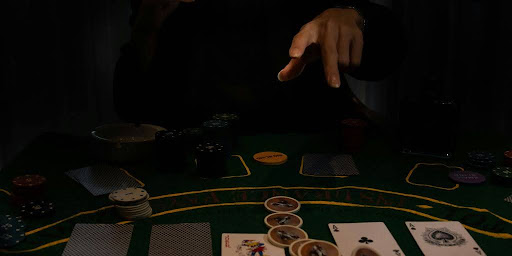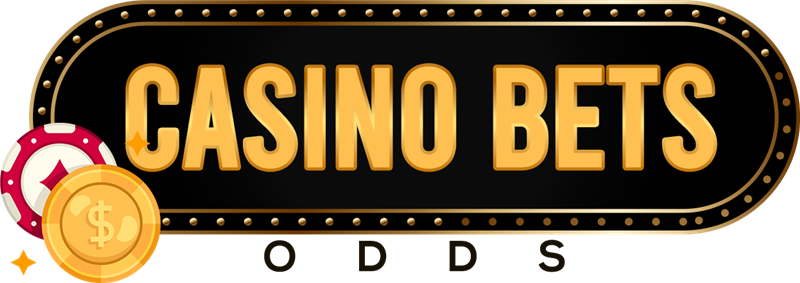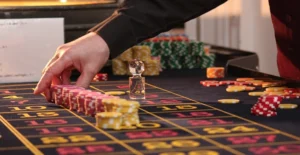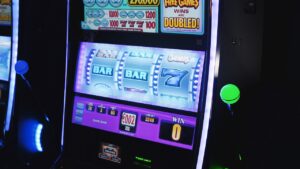So, you’re looking to get better at video poker and keno. This game is a cool mix of two casino favorites, and it can be a lot of fun once you get the hang of it. It’s not just about luck, either. There are some smart ways to play that can really help your chances. We’re going to walk through everything you need to know to play video poker and keno like you’ve been doing it for years. Let’s get started.
Key Takeaways
- Video poker keno combines elements from both traditional video poker and keno games, making it unique.
- Understanding how to pick the right pay table can really change your return on investment.
- For keno, picking between 4 and 8 numbers often works out better than picking more or fewer.
- Managing your money and bets is super important to keep playing and having fun.
- Using free games and simulators is a great way to get good without risking your cash.
Introduction to Video Poker Keno – What Makes It Unique?
Video Poker Keno might sound like a mouthful, but it’s actually a pretty cool blend of two classic casino games. It takes the strategic element of video poker and mixes it with the luck-based fun of keno. The result is a game that offers a different kind of thrill compared to either game on its own.
Think of it this way: you’re not just mindlessly picking numbers like in regular keno, and you’re not solely focused on making the best poker hand. Instead, you’re juggling both, trying to make smart decisions that impact both the poker hand and the keno numbers you’ve chosen. It’s a game that keeps you on your toes.
Video Poker Keno is unique because it combines skill and chance in a way that few other casino games do. It’s not just about luck; your decisions matter. This makes it appealing to players who like to have some control over the outcome, while still enjoying the excitement of a random draw.
Here’s what makes it stand out:
- It’s a hybrid game, blending video poker and keno.
- It requires strategic thinking in both number selection and card holds.
- It offers a different payout structure than traditional keno or video poker.
It’s also worth noting that, like regular keno, the keno house edge can be a factor. But the added element of video poker strategy gives you a bit more control than you’d have in a straight keno game. So, if you’re looking for something a little different, Video Poker Keno might just be your thing.
Understanding the Rules: Video Poker vs. Keno Mechanics
Okay, let’s break down how Video Poker Keno works. It’s a hybrid game, so you’ve got elements of both video poker and keno mashed together. It might sound complicated, but once you get the basics, it’s pretty straightforward.
First off, you’re dealt a hand of cards, just like in regular video poker. Then, you get to choose which cards to hold and which to discard, again, just like video poker. But here’s where it gets interesting: the cards you hold become your “keno numbers.” The game then draws a set of “winning” numbers, and you get paid out based on how many of your held cards match the drawn numbers. It’s a blend of skill and chance, which is what makes it kind of fun.
The core difference lies in how wins are determined. In video poker, you’re aiming for specific poker hands. In Keno, it’s all about matching numbers. Video Poker Keno combines these, using your poker hand selection to influence your keno outcome.
Think of it this way:
- Video Poker: Skill-based card selection to form winning poker hands.
- Keno: Pure chance, matching numbers drawn at random.
- Video Poker Keno: Skill-based card selection influences your “keno numbers,” then chance determines the match.
It’s important to remember that while video poker strategy can help you choose the best cards to hold, it doesn’t guarantee a win in the keno portion. The random number draw still plays a significant role. So, you need to balance your poker strategy with an understanding of keno odds.
Now, let’s talk about the specifics of each game individually. This will help you understand how they come together in Video Poker Keno. If you want to learn more about casino bets odds, there are many resources available.
Choosing the Right Pay table: Maximizing Your RTP
When it comes to Video Poker Keno, not all games are created equal. The pay table is your roadmap to understanding the game’s potential and, more importantly, its Return to Player (RTP). Choosing a favorable pay table is the single most important factor in maximizing your winnings over the long run. Think of it as shopping for the best deal – you wouldn’t buy something without comparing prices, right? The same logic applies here.
It’s easy to get caught up in the excitement of the game, but taking a few minutes to analyze the pay table can make a huge difference. Different versions of Video Poker Keno offer varying payouts for the same combinations of hands and keno numbers. These small differences add up over time, significantly impacting your overall profitability. Let’s explore how to spot the good ones.
Understanding the pay table is like having a secret weapon. It allows you to make informed decisions, avoid sucker bets, and ultimately, increase your chances of walking away a winner. Don’t underestimate its power.
Here’s what to look for:
- High Payouts for Full House and Flush: In the video poker portion, these hands should offer generous payouts. A full house paying 9x your bet and a flush paying 6x (often called “9/6 Jacks or Better”) is a good starting point.
- Favorable Keno Multipliers: Check the multipliers for hitting various numbers of spots in the keno portion. Some games offer significantly better payouts for hitting a certain number of spots compared to others. For example, some games might pay more for hitting 4 out of 4 spots than others.
- Progressive Jackpots: Some Video Poker Keno games feature progressive jackpots that grow over time. While these can be tempting, remember that they often come with lower base payouts. Evaluate whether the potential jackpot outweighs the reduced payouts on other hands and keno hits. It’s a risk/reward calculation.
Consider this example. Let’s say you’re comparing two Video Poker Keno games. Game A offers a 9/6 Jacks or Better pay table and a keno payout of 100x for hitting 5 out of 5 spots. Game B offers an 8/5 Jacks or Better pay table but a keno payout of 150x for hitting 5 out of 5 spots. Which one is better? It depends on your playing style. If you focus more on video poker, Game A might be preferable. If you’re more of a keno player, Game B could be more appealing. However, you should always calculate the overall RTP of Crazy Time to make an informed decision.
Ultimately, the best pay table is the one that aligns with your risk tolerance and playing style. Do your homework, compare the options, and choose wisely.
Best Video Poker Keno Variants for Skilled Players
Okay, so you’re getting serious about video poker and keno. That’s awesome! Not all games are created equal, and some variants offer better odds or more strategic depth than others. Knowing which ones to focus on can really improve your chances of winning. Let’s look at some of the best options for skilled players.
Understanding Variance in Different Variants
Variance is a big deal. Some games might have smaller, more frequent wins, while others offer the chance for huge payouts but with less consistency. Skilled players need to understand this and choose games that match their risk tolerance and bankroll. For example, a high-variance game might be exciting, but it could also wipe out your bankroll quickly if you’re not careful. A lower-variance game will let you play longer, but the wins might not be as impressive.
Top Video Poker Keno Games to Consider
Here are a few variants that are often favored by experienced players:
- Multi-Card Keno: This lets you play multiple keno cards at once, increasing your chances of hitting winning numbers. It can also speed up the game, which is good if you’re trying to clear bonuses or earn rewards.
- Power Keno: In Power Keno, if the last number drawn matches one of your selected numbers, your payout is multiplied. This adds an extra layer of excitement and potential for big wins.
- Bonus Keno: This variant includes bonus rounds or special features that can boost your winnings. These bonuses often involve multipliers or extra draws, giving you more chances to win.
Why These Variants Stand Out
These variants aren’t just about luck; they offer opportunities to use strategy and skill. For example, in Multi-Card Keno, you can adjust your betting strategy based on the number of cards you’re playing. In Power Keno, understanding the odds of hitting that last number can help you make better decisions. And in Bonus Keno, knowing how to trigger the bonus rounds and maximize your winnings is key.
Choosing the right variant is a personal thing. Think about what you enjoy most about playing, and then find the games that match your style. Do you like the thrill of chasing big payouts, or do you prefer a more steady, consistent experience? There’s a game out there for everyone, so take some time to explore and find your favorites.
Optimal Number Selection in Keno: Why 4–8 Spots Perform Best
So, you’re diving into the world of Video Poker Keno, huh? Cool. One of the first things you’ll probably wonder is: how many numbers should I even pick? It’s a valid question, and the answer isn’t as straightforward as you might think. While some folks believe more numbers equal more chances, that’s not always the case, especially when you consider the payout structure.
Generally, sticking to 4-8 spots gives you the best balance between hit frequency and potential payout. Let’s break down why.
Think of it this way: if you pick too few numbers (like 1-3), your odds of hitting enough to actually win anything are super low. It’s like trying to thread a needle in a hurricane. On the flip side, if you go crazy and pick, say, 15 numbers, you’re gonna need to hit a lot of them just to break even. That’s a tough ask, even for seasoned players. The keno odds are influenced by the number of spots chosen.
Choosing between 4 and 8 numbers allows for a sweet spot where the probability of hitting a decent number of matches is reasonable, and the payouts for those hits are worthwhile. It’s all about finding that equilibrium.
Here’s a simplified look at how the number of spots can affect your gameplay:
- 4 Spots: Decent odds of hitting 2-3 numbers, payouts can be okay.
- 5-7 Spots: A good balance, offering reasonable hit frequency and potentially higher payouts.
- 8 Spots: Can be riskier, needing more hits to get a return, but the payouts can be significant.
Ultimately, the “best” number of spots depends on the specific Video Poker Keno variant you’re playing and your personal risk tolerance. But starting with that 4-8 range is a solid strategy.
Balanced Number Strategy: Mixing High & Low Picks

When playing Video Poker Keno, it’s tempting to stick to numbers that feel lucky or have some personal significance. However, a more strategic approach involves balancing your number selection between high and low values. This strategy is based on the idea that the random number generator (RNG) is likely to distribute numbers across the spectrum, and covering both ends increases your chances of hitting a winning combination.
A balanced approach can potentially smooth out the variance inherent in Keno.
Think of it like this: if you only pick numbers from 1 to 40, you’re essentially ignoring half the board. While there’s no guarantee that high numbers will be drawn, you’re limiting your potential hits by focusing solely on one range.
Here’s a simple way to implement this strategy:
- Divide the Keno board mentally into high (41-80) and low (1-40) sections.
- Aim for a roughly even split in your number selection. For example, if you’re picking 8 numbers, choose 4 from the low range and 4 from the high range.
- Adjust the split based on your risk tolerance. If you’re feeling lucky, you might lean slightly towards one range or the other, but avoid extremes.
It’s important to remember that Keno is still a game of chance. No strategy can guarantee a win every time. However, by employing a balanced number strategy, you can potentially improve your odds and make the game more engaging.
Consider this example. Let’s say you’re playing a game where you pick 6 numbers. A balanced selection might look like this: 3, 15, 22, 48, 61, 75. This covers a wide range of the board, increasing your chances of matching some of the drawn numbers. Remember to always check the pay tables to see how many numbers you need to hit to get a return.
Understanding Hot & Cold Numbers: Myths vs. Reality
One of the most persistent beliefs in Keno, and many other games of chance, revolves around the idea of “hot” and “cold” numbers. The theory suggests that some numbers are drawn more frequently (hot) while others are drawn less often (cold). Many players base their number selection on these perceived trends, hoping to capitalize on the supposed patterns. But does this strategy actually work in Video Poker Keno?
The truth is, the concept of hot and cold numbers is largely a myth. In a truly random game, each number has an equal chance of being selected in every draw. Past results have absolutely no influence on future outcomes. This is because Video Poker Keno uses a random number generator (RNG) to ensure fairness and unpredictability.
Think of it like flipping a coin. Just because you get heads five times in a row doesn’t mean tails is “due” on the next flip. The odds remain 50/50 each time. Similarly, in Keno, even if a number hasn’t been drawn in the last 20 games, its chances of being drawn in the next game are exactly the same as any other number.
Relying on hot and cold numbers is an example of the gambler’s fallacy – the mistaken belief that past events can influence independent future events. While it might be tempting to track these numbers and adjust your strategy accordingly, it’s important to remember that Keno is a game of pure chance.
Instead of chasing these illusory patterns, focus on strategies that actually impact your odds, such as choosing the right pay table and managing your bankroll effectively. Remember, Keno is a game of entertainment, so enjoy the experience and play responsibly.
Here’s a simple breakdown:
- Randomness: Each number has an equal chance of being drawn.
- Independence: Past draws don’t affect future draws.
- Gambler’s Fallacy: Avoid basing decisions on perceived patterns.
Video Poker Core Strategy: Hold or Discard Decision Making
Okay, so you’re ready to get serious about video poker keno? A big part of that is knowing your video poker. It’s not just about luck; it’s about making smart choices. This section is all about the core strategy: deciding which cards to hold and which to discard. It’s the foundation for playing well and boosting your chances of winning. Think of it as the ‘brains’ behind your operation. You can always find more information about video poker strategy online.
The basic idea is to keep the cards that give you the best chance of making a winning hand, and ditch the ones that don’t.
It sounds simple, but it can get tricky depending on the game variant and the specific cards you’re dealt. Let’s break it down.
Mastering the hold/discard decision is like learning to ride a bike. It feels wobbly at first, but with practice, it becomes second nature. Don’t get discouraged if you make mistakes early on. Every hand is a learning opportunity.
Here’s a simple breakdown of how to approach this:
- Identify potential winning hands: Look for pairs, three-of-a-kind, straights, flushes, or anything that’s just one card away from being a winner.
- Consider the pay table: Some hands are worth more than others. A royal flush is the holy grail, but even a simple pair can be worth holding onto, depending on the game.
- Weigh the odds: Think about the probability of improving your hand by drawing new cards. Sometimes, it’s better to break up a small pair in hopes of hitting something bigger.
Combining Strategies: Syncing Video Poker Holds with Keno Picks
Okay, so you’ve got your head around video poker and keno separately. Now comes the fun part: blending them. It’s not just about playing two games at once; it’s about making them work together to boost your odds. Think of it like this: Video poker gives you a bit of control with the hold/discard decision, while keno is more about probability. The trick is to use your video poker hand to inform your keno number selection, and vice versa.
The goal is to find synergy between the two games.
Let’s say you’re dealt a decent video poker hand, like three of a kind. You’re probably going to hold those three cards. But what if the numbers on those cards (or their face values) are also good keno numbers based on your strategy? That’s where the magic happens. It’s about finding those little overlaps that can potentially pay off big time.
It’s important to remember that both games are still games of chance. No strategy guarantees a win every time. But by combining your approaches, you’re making more informed decisions, which can improve your overall results over time.
Here’s how you can start thinking about it:
- Note the card values: If you’re holding a King, Queen, and Jack in video poker, consider 13, 12, and 11 as potential keno picks.
- Consider suits: Some players assign values to suits (e.g., hearts = high numbers, spades = low numbers). If you have a lot of hearts, you might lean towards higher keno numbers.
- Don’t force it: If the video poker hand doesn’t naturally suggest any good keno numbers, don’t try to force a connection. Stick to your core keno strategy.
It’s all about finding that sweet spot where your video poker play enhances your keno picks, and vice versa. And remember, practice makes perfect. The more you play, the better you’ll get at spotting these opportunities. You can practice at free-play keno sites to get a feel for it.
Bankroll & Bet Management: Staying in Control Like a Pro
It’s easy to get carried away when you’re on a hot streak, or to chase losses when things aren’t going your way. But smart bankroll and bet management are what separate casual players from those who consistently enjoy the game without risking financial ruin. Think of your bankroll as your business’s operating capital – you need to protect it to stay in the game.
Effective bankroll management means setting limits and sticking to them, no matter what.
- Set a Budget: Decide how much you’re willing to spend before you start playing, and don’t exceed that amount. This should be money you can afford to lose without impacting your daily life.
- Define Win/Loss Limits: Establish both a win goal and a loss limit for each session. If you hit your win goal, cash out and celebrate. If you reach your loss limit, stop playing and come back another day. Don’t try to win back losses in the same session.
- Track Your Results: Keep a record of your wins and losses. This helps you identify patterns in your play and adjust your strategy accordingly. It also provides a realistic view of your overall performance.
Treat video poker keno as entertainment, not a source of income. The house always has an edge, and while skill can reduce that edge, it can’t eliminate it. Responsible gaming is about enjoying the experience without letting it take over your life.
Bet sizing is also important. A common recommendation is to bet a small percentage of your bankroll on each game. This helps you weather losing streaks and prolong your playing time. For example, with a $100 bankroll, consider betting $1-$2 per game. This allows for more basic math strategies and decision-making.
Here’s a simple table illustrating bet sizing based on bankroll:
| Bankroll | Recommended Bet Size |
| $100 | $1 – $2 |
| $500 | $5 – $10 |
| $1000 | $10 – $20 |
Utilizing Multi-Race/Auto Play Features for Efficiency
Video Poker Keno can be a blast, but let’s be real, clicking the same numbers over and over can get old fast. That’s where multi-race and autoplay features come in handy. They’re not just about convenience; they can help you manage your time and focus on strategy.
Streamlining Gameplay with Multi-Race Cards
Think of multi-race cards as your best friend when you’re settling in for a longer session. Instead of picking your numbers every single round, you can set it up to play the same numbers for a set number of games. This is especially useful if you have a number strategy you like and want to stick with it. Most online casinos offer this feature, so it’s worth looking for.
Auto Play: Setting It and (Almost) Forgetting It
Autoplay takes things a step further. You can pre-set your bet size, the number of spots you want to play, and even loss limits. Then, the game runs automatically until you hit your limit or decide to stop it. It’s great for when you want to play while doing something else, but remember to keep an eye on your bankroll.
Benefits of Automation
- Reduces repetitive strain: No more clicking fatigue.
- Saves time: Get more games in per session.
- Helps maintain consistency: Easier to stick to your strategy.
Using these features wisely can free you up to analyze your results and adjust your strategy. It’s all about finding the right balance between automation and active involvement in the game.
Potential Pitfalls to Avoid
While these features are great, it’s easy to get carried away. Always set a budget and stick to it. Don’t let the convenience of autoplay lead to overspending. Also, make sure you understand the game’s poker game time before committing to a long autoplay session. It’s easy to lose track of how much you’re betting when the game is running on its own.
Reading and Exploiting Pay Tables: Spotting Value in Slots

Okay, so you wanna get serious about Video Poker Keno? Then you have to understand pay tables. It’s not just about seeing the biggest numbers; it’s about understanding the probabilities behind them and how they affect your long-term return. Think of it like this: a seemingly high payout might be attached to incredibly low odds, making it a sucker bet. Let’s break it down.
Understanding Pay Table Components
Pay tables in Video Poker Keno show you what you get paid for hitting different numbers of spots. They vary wildly between games, and even within the same game at different casinos. Here’s what to look for:
- Payout Multipliers: These tell you how much your bet is multiplied if you hit a certain number of spots. For example, hitting 5 out of 5 spots might pay 50x your bet.
- Number of Spots: Pay tables will show payouts for different numbers of spots selected (e.g., 1 spot, 2 spots, up to 10 or more).
- Return to Player (RTP): This is the theoretical percentage of all wagered money that a slot machine will pay back to players over time. While not always explicitly stated, you can often deduce it by comparing payouts across different spot selections. Aim for games with higher RTPs.
Identifying High-Value Pay Tables
Not all pay tables are created equal. Some offer significantly better value than others. Here’s how to spot the good ones:
- Compare Payouts: Look for tables where the payouts for hitting a moderate number of spots (like 4-7) are relatively high compared to other tables. These are often the sweet spots.
- Consider the Variance: High payouts on hitting all your spots might be tempting, but they often come with very low probabilities. This leads to high variance gameplay, where you might experience long losing streaks. Lower, more consistent payouts can be better for bankroll management. Understanding the Keno guide is important.
- Look for Full Pay Tables: In some Video Poker Keno variants, certain pay tables are considered “full pay,” meaning they offer the highest possible RTP for that game. Research these specific pay tables and prioritize playing them.
Examples of Pay Table Variations
To illustrate, let’s look at a simplified example. Imagine two different Video Poker Keno games, both allowing you to pick up to 5 spots:
| Spots Hit | Game A Payout | Game B Payout |
| 3/5 | 5x | 3x |
| 4/5 | 20x | 15x |
| 5/5 | 100x | 200x |
At first glance, Game B might seem better because it pays out more for hitting all 5 spots. However, Game A offers better payouts for hitting 3 or 4 spots. If you’re more likely to hit 3 or 4 spots than all 5, Game A might be the better choice in the long run. It’s all about balancing risk and reward.
Understanding pay tables is like having a secret weapon. It allows you to make informed decisions about which games to play and how many spots to pick, ultimately increasing your chances of winning. Don’t just blindly pick numbers; analyze the pay tables and play smart.
Adjusting Strategy Based on Pay Tables
Once you understand how to read pay tables, you can adjust your strategy accordingly. For example:
- If a pay table offers a particularly high payout for hitting 6 out of 6 spots, you might consider playing 6 spots more often.
- If a pay table is weak on the lower end (e.g., low payouts for hitting 3 or 4 spots), you might focus on playing fewer spots with higher individual payouts.
- Always compare pay tables at different casinos or online platforms to find the most favorable conditions. Some casinos offer online slots with better payouts than others.
Practice Makes Perfect: How to Learn with Free Games and Simulators

Okay, so you’re ready to take on Video Poker Keno. Awesome! But before you start throwing down real money, let’s talk about getting some practice in. You wouldn’t try to run a marathon without training, right? Same deal here. Luckily, there are tons of ways to learn the ropes without risking your bankroll.
Free games and simulators are your best friends when you’re starting. They let you experiment with different strategies, get a feel for the game’s rhythm, and figure out what works for you – all without any financial pressure. Think of it as your own personal Video Poker Keno dojo.
Using free games and simulators is not just about avoiding losses; it’s about building a solid foundation of knowledge and experience. It’s about turning hunches into informed decisions and developing the confidence to play strategically.
Here’s how to make the most of these resources:
- Find Reputable Platforms: Look for well-known online casinos or gaming sites that offer free versions of Video Poker Keno. Read reviews and make sure they’re legit. You want a fair simulation, not something rigged against you.
- Experiment with Different Variants: Don’t just stick to one type of Video Poker Keno. Try out different pay tables and rule variations to see which ones you enjoy and which ones offer the best potential returns. This is a great way to discover your preferred style of play.
- Track Your Results: Keep a record of your wins and losses, the strategies you used, and any observations you made. This will help you identify patterns, refine your approach, and see what’s working. It’s like keeping a training log for your brain.
It’s also a good idea to check out some helpful training tools to improve your skills. You can also find some great resources in the Video Poker newsletter.
Think of free play as an investment in your future success. The more time you spend practicing, the better your chances of winning when you finally decide to play for real.
Frequently Asked Questions
What exactly is Video Poker Keno?
Video Poker Keno is a cool mix of two popular casino games: Video Poker and Keno. You get to play hands of poker while also picking numbers for a Keno drawing. It’s unique because it combines the skills needed for poker with the luck of Keno, giving you more ways to win.
How is Video Poker Keno different from regular Video Poker or Keno?
The main difference is how you play. In Video Poker, you get cards and decide which ones to keep to make the best poker hand. In Keno, you pick numbers from a big group, and then numbers are drawn randomly. Video Poker Keno brings these two styles together, so you’re doing both at once.
How can I pick the best game to play for better chances of winning?
To get the best chance of winning, you need to find games with the highest ‘RTP’ (Return to Player). This means the game pays back more money over time. Always check the pay table before you play to see which game offers the best odds for your money.
Why is it better to pick 4 to 8 numbers in Keno?
Many players find that picking between 4 and 8 numbers in Keno gives them the best balance. Picking too few numbers means lower payouts, while picking too many makes it much harder to hit them all. This range seems to offer a good mix of winning chances and decent payouts.
Should I pick only high or low numbers in Keno?
It’s smart to mix up your Keno number picks, choosing some low numbers (like 1-40) and some high numbers (like 41-80). This way, you’re not putting all your eggs in one basket, as winning numbers are often spread out across the board.
Do ‘hot’ or ‘cold’ numbers really matter in Keno?
The idea of ‘hot’ (numbers that come up a lot) or ‘cold’ (numbers that haven’t come up in a while) numbers is mostly a myth. Keno draws are completely random, meaning each number has the same chance of being picked every time. Don’t rely on past results to predict future ones.
What’s the main strategy for the Video Poker part of the game?
In Video Poker, you get five cards and decide which ones to ‘hold’ (keep) and which to ‘discard’ (get rid of) to get new cards. The goal is to make the best possible poker hand. Learning the right strategy for each type of Video Poker game is key to winning more often.
How can I practice playing without spending money?
You can practice for free! Many websites and apps offer free versions of Video Poker Keno. This lets you try out different strategies and get a feel for the game without risking any real money. It’s the best way to learn and get better before playing for cash.
Daniel Chase is a seasoned casino analyst and iGaming writer with over 10 years of experience in the online gambling industry. He specializes in game strategy, casino odds, and player-focused reviews. Daniel is passionate about helping players make smarter decisions through transparency, real data, and honest insight.











